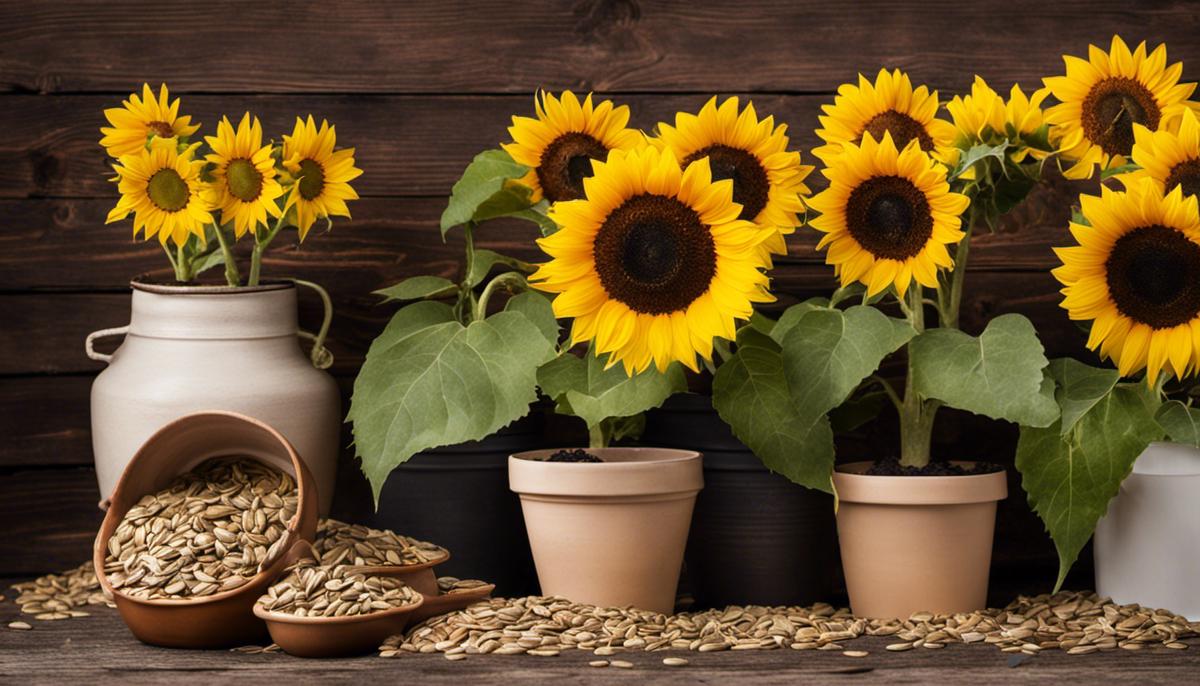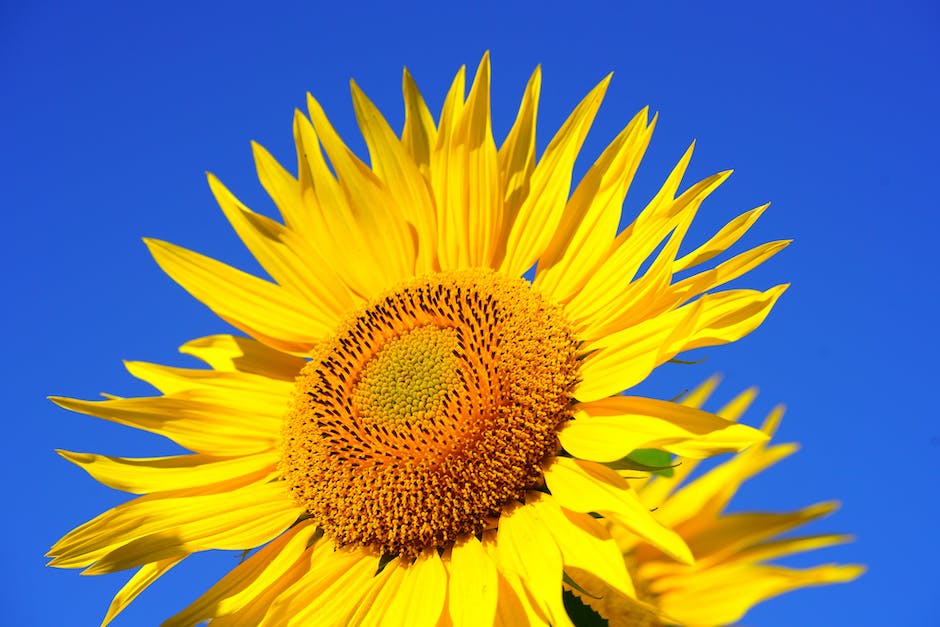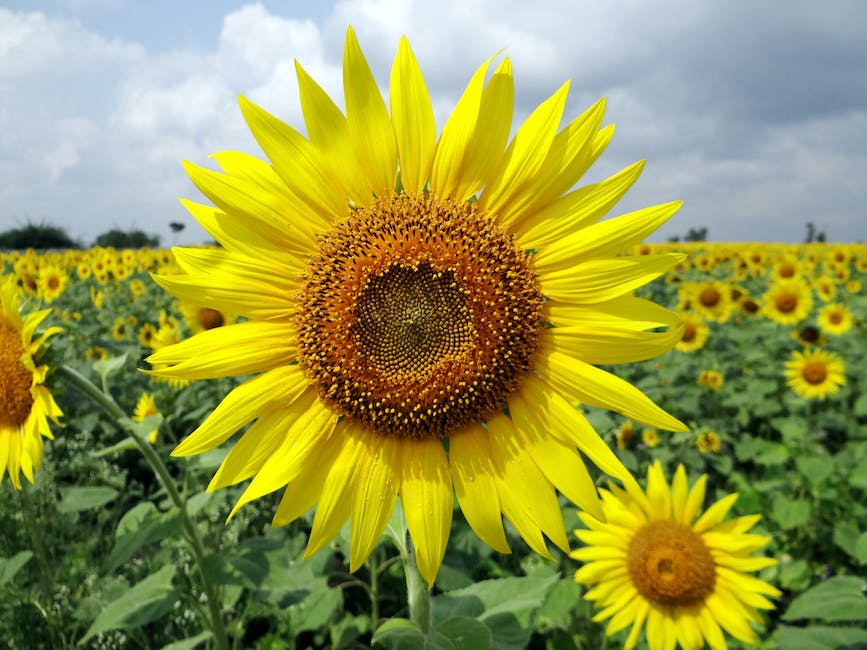Easy Guide on Growing Sunflowers in a Pot

The serenity and vibrant hue radiated by sunflowers can bring an unparalleled allure to the aesthetics of your home. While these golden beauties traditionally thrive in an expansive field, the premise of this discussion is pivoted on the possibility of bringing this radiant charm right into your home, by growing sunflowers in a pot. We delve into the essentials of choosing the right pot and sunflower seed, focusing on how the pot’s type, size, and material drastically affect the growth of these sunny blooms. Equally important is the understanding of the planting process, which revolves around the right depth for potting sunflower seeds, appropriate soil conditions, and effective techniques to properly care for these sun-loving plants.
Choosing the Right Pot and Sunflower Seed
Title: A Beginner’s Guide to Growing the Sunniest Sunflowers, Right in Your Living Room!
Have a green thumb? Or maybe just an enthusiastic love for all things vibrant and full of life? Whichever description best suits you, growing sunflowers indoors is certainly a hobby that’s sure to test your nurturing skills while gifting you with some of the most magnificent blooms. Sunflowers are wonderfully expressive and can make any room radiate with a splash of sunshine.
Firstly, let’s talk about the seeds. The variety of sunflower seeds is vast. But for indoor growth, Dwarf Sungold Sunflower seeds tremendously stand out. Unlike their sky-tickling cousins, these varieties typically grow between 1 to 3 feet tall, making them perfect for indoor gardening. These seeds produce double-blooming flowers and pack the same bold, yellow hue that sunflowers are known for.
Another exciting pick could be the Teddy bear sunflower. These seeds sprout compact, fluffy, and fully double golden yellow heads that carry an irresistible charm! Their cute, cuddly appearance makes this variety quite a show stopper amongst indoor grafted sunflowers.
Next, let’s talk about the right pot to nurture these sun-lovers. Sunflowers have long taproots that need room to grow, so depth is an important factor when choosing the perfect pot. The pot needs to be at least 12 inches deep and should have a diameter between 12 and 16 inches. The most recommended options are clay, ceramic, or even plastic pots.
However, if aesthetic appeal is a priority, go for glazed ceramic pots that come in various colors and designs. They not only look attractive but also efficiently retain moisture. Regardless of the material, make sure that the pot has proper drainage holes. Sunflowers prefer well-drained soil, and excess water could lead to root rot.
Once the pot and seeds are sorted, fill the pot with good quality, well-draining potting mix (free from garden soil), bury the seed 1-2 inches deep, water them thoroughly, and place them near a sunny window. Sunflowers, as their name suggests, crave lots of light!
From then on, maintain consistent moisture, rotate the pot for even sun exposure, and behold as your sunflower breaks through the soil, growing bright and tall right indoors.
Trust in this guide, green-thumb enthusiasts! Gear up with the perfect seeds and pot and embark on this sunflower growing adventure. In no time, you’ll have your very own indoor sunshine, radiating happiness, warmth, and exuberant life!

The Planting Process
Delving Further into the World of Indoor Sunflower Cultivation: Nurturing your Seedlings
Having given an insightful overview on the art and joy of growing sunflowers indoors, let’s now explore just a bit further. Grab your favorite gardening gloves because we’re diving into more extensive details about the care and nurturing of your newly planted sunflower seeds.
You have your variety of dwarf sunflower seeds, whether they be the alluring Dwarf Sungold, the Teddy Bear, or another charming variety. Your pot is all picked out, drilled with drainage holes and filled with well-draining organic potting mix. Now it’s time to take the next steps to ensure your seeds flourish into lovely sunflowers.
Start off by setting your seeds about one inch deep into the soil. Ensure to space them around six inches apart to allow ample room for growth and ventilation. Careful not to crowd your seeds – suffocating roots can hinder your plant’s development and overall health.
Water your seeds gently. A useful tip to remember is always aim for moist, not drenched soil. Soggy soil not only jeopardizes healthy root development, but also puts your plant at risk for root rot and other harmful fungal diseases. Pro hobbyist tip: to maintain consistently moist soil, consider a spritz from a spray bottle for your daily watering regimen. It’s a practical and efficient method that prevents both overwatering and underwatering.
After planting and watering, place your pot in a sunny location where it can enjoy abundant, direct sunlight for at least six-eight hours each day. Remember – equal sun exposure is vital for balanced growth. Make it a habit to rotate your pot occasionally for even light exposure on all sides of your sunflower.
Once your sunflower seeds start to sprout, don’t be quick to add fertilizer. These beautiful plants aren’t very demanding and can prosper without much help. However, if you do decide to fertilize, go for a balanced, water-soluble, organic option and follow the manufacturer’s instructions to avoid any accidental burns to the young seedlings.
With these guidelines proving your compass, it won’t take a great deal of time before you stand back and proudly admire your home-grown indoor sunflower. Congratulations, you are now not just a hobbyist, but a true cultivator of the sun encapsulated in a pot. So grab a cup of your favorite brew, settle back by your window and watch in wonderment as your sunflowers reach out toward the light, reminding us all to do the same. May this enriching journey fill your home, and soul, with warmth, brightness, and life, that only sunflowers can bring.

Sunflower Care and Maintenance
Sunflowers offer a certain charm to any space they occupy. Adding them to your indoor surroundings requires a dedicated regimen of care, best understood through familiarity.
Having settled upon the variety and arranged for a well-draining pot, it’s time to delve into the appropriate aftercare for your potted sunflowers. Prominent factors for success involve attention to the two S’s – Spacing and Sunlight; along with the art of watering and, if you wish, fertilization.
Sprouted sunflower seeds require adequate space to spread their roots. The idea isn’t to just put depth to the advantage but also make the most of the diameter of the pot. That’s where correct seed placement and spacing play a significant role. Nestle each seed approximately 6 inches apart. This spacing allows each sprout to have its own personal growth zone, free of competition for resources, which includes room to spread out its roots.
Remember, sunflowers get their name for a reason. They are in constant pursuit of sunlight, rotating their heads to follow its course, commonly known as heliotropism. Though indoor sunflowers are generally smaller and less aggressive in their sun-chasing behavior, they still appreciate ample light. A south-facing window is perfect, offering plenty of light for your sunflowers to bask in. However, if your window doesn’t offer enough natural light, investing in a grow light or a fluorescent lamp can provide an excellent alternative.
Watering potted sunflowers carries its own set of rules, best summed up by the Goldilocks’ principle – not too much, not too little, but just right. Water-loving as they may be, sunflowers abhor water-logged conditions, owing to their susceptibility to root rot. Aim to keep the soil moist, but never soaked. A general rule to follow would be to water the plant thoroughly once or twice a week, ensuring the water drains through the bottom of the pot and doesn’t stay stagnant.
As for fertilization, indoor sunflowers can indeed benefit from this additional boost. Use a well-balanced, water-soluble fertilizer once a month during the growing season. A 10-10-10 NPK ratio (Nitrogen, Phosphorus, and Potassium) is generally recommended for sunflowers. Apply it at half strength to prevent fertilizer burn. Remember, fertilizers are meant to complement your plant’s health, not to replace good plant care.
Sunflowers are indeed a delight to watch as they grow. Indoor sunflowers catch the eye, illuminating the surroundings with their vibrant hues. The journey from sowing the seed to witnessing its growth is a fulfilling process of patience, care, and admiration for nature’s bounty. With these dedicated routine care tips, your potted sunflowers are sure to thrive and burgeon, bringing perpetual sunshine indoors!

Filled with nuances about the upkeep of potted sunflowers, this discussion also shares critical pointers on sunflower care and maintenance. It primes us on the right watering frequency, the level of sunlight exposure they thrive in, and the large and welcoming petals’ signs of healthy growth. We also gain insight on what to do when these garden gems are under siege by pests or diseases. As we discover, the nimbleness of your fingers and a basic understanding of sunflower growth could actually transform your home into a small sunny haven, fostering beautiful sunflowers right within the space of a pot.



